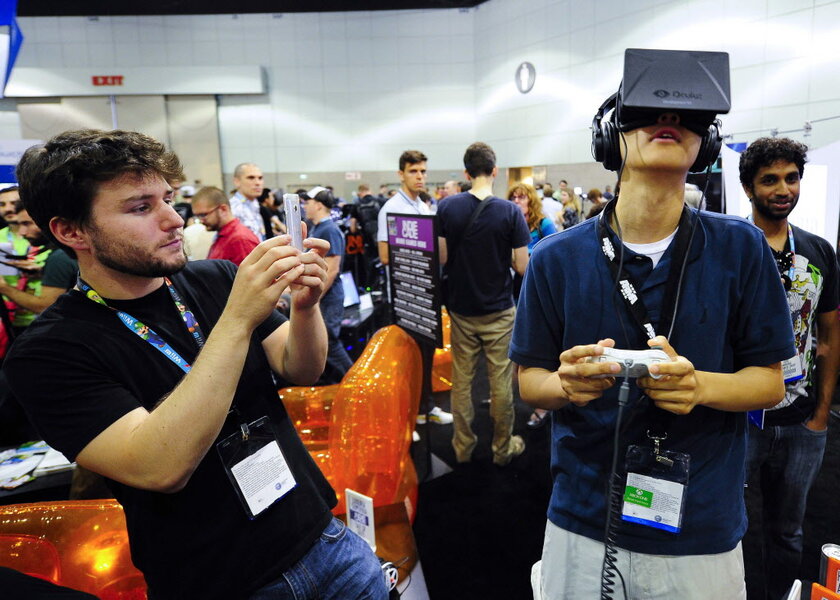Virtual reality goggles are ready for your living room
This month marks a new chapter for virtual reality. After decades of disappointing VR experiences at arcades and museums, the first in a trio of high-tech goggles will soon be available. The goggles promise not only to live up to the science fiction potential of virtual reality, but also to allow you to wander digital worlds from the comfort of home.
Facebook will release its Oculus Rift headset on March 28, followed later this year by its chief rivals, the HTC Vive and Sony PlayStation VR.
“So, what has changed that differentiates the current state from the 1990s flop?” asks investment bank Goldman Sachs in a recent analyst note. “The answer is the technology.”
When you strap on modern VR goggles, each eye stares into a small screen with as many pixels has an HDTV – and with a frame-per-second count that’s triple that of a Hollywood film. Pair that with high-end movement sensors, and you get incredibly smooth motion that reacts to your every head tilt.
The goggles combine these technologies to instill a sense of “presence,” the illusion that everything around you moves so naturally that you forget, if only for brief movements, that it’s all digital. Few of these 3-D experiences look lifelike, but early VR artists have discovered anecdotally that cartoon characters that move naturally look more convincing in virtual reality than photo-realistic images that stutter even slightly.
Facebook’s Oculus Rift headset will cost $599. Its two competitors have yet to announce pricing, but analysts expect Sony’s will cost a bit less, while the HTC Vive, which is designed to let people get up from their computer desks and move around a room in VR, will likely cost more.
However, that’s only part of the entry fee. Oculus and Vive both require a powerful PC to work. If your home computer isn’t up to snuff, Facebook offers several “Oculus-ready” PCs, starting at $949. Sony’s headset will instead plug into a PlayStation 4, the $349 video game machine.
The technology will be worth the price, according to Goldman Sachs, which predicts the VR industry will outperform the TV market by 2026.








